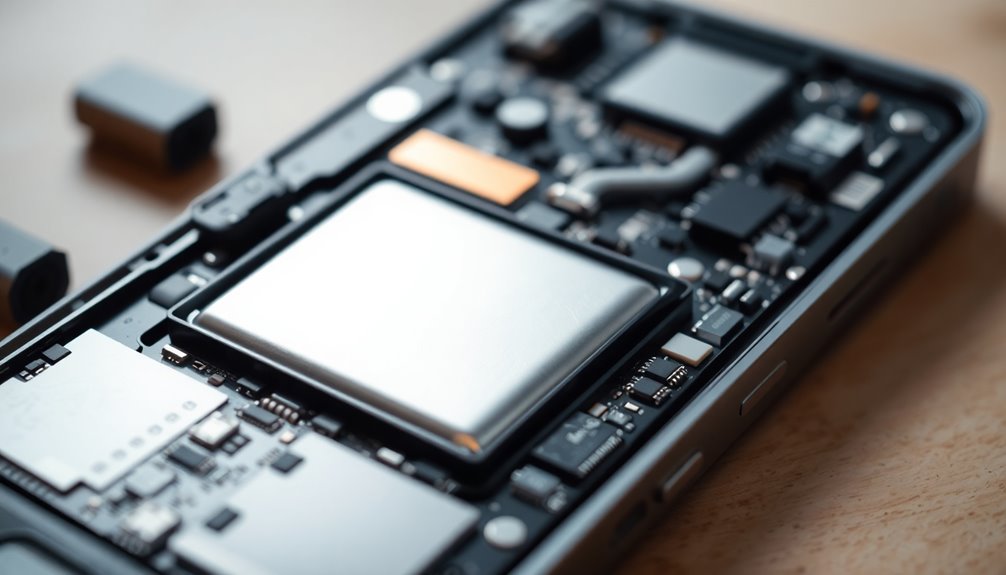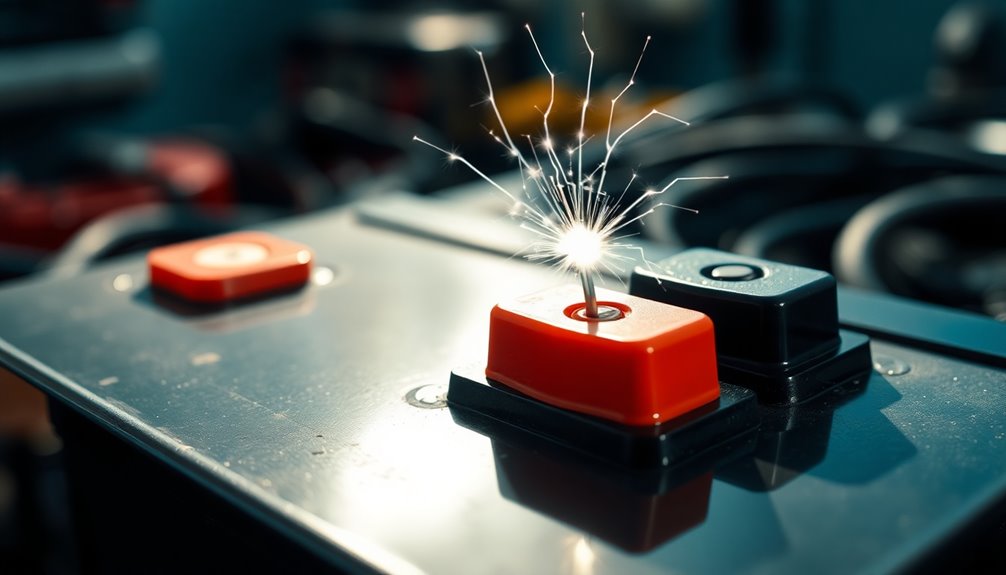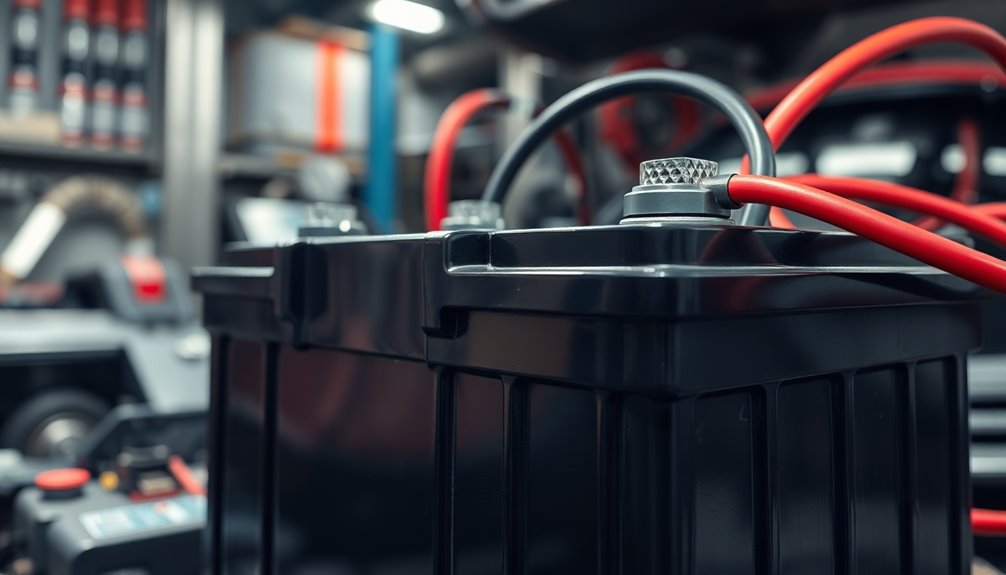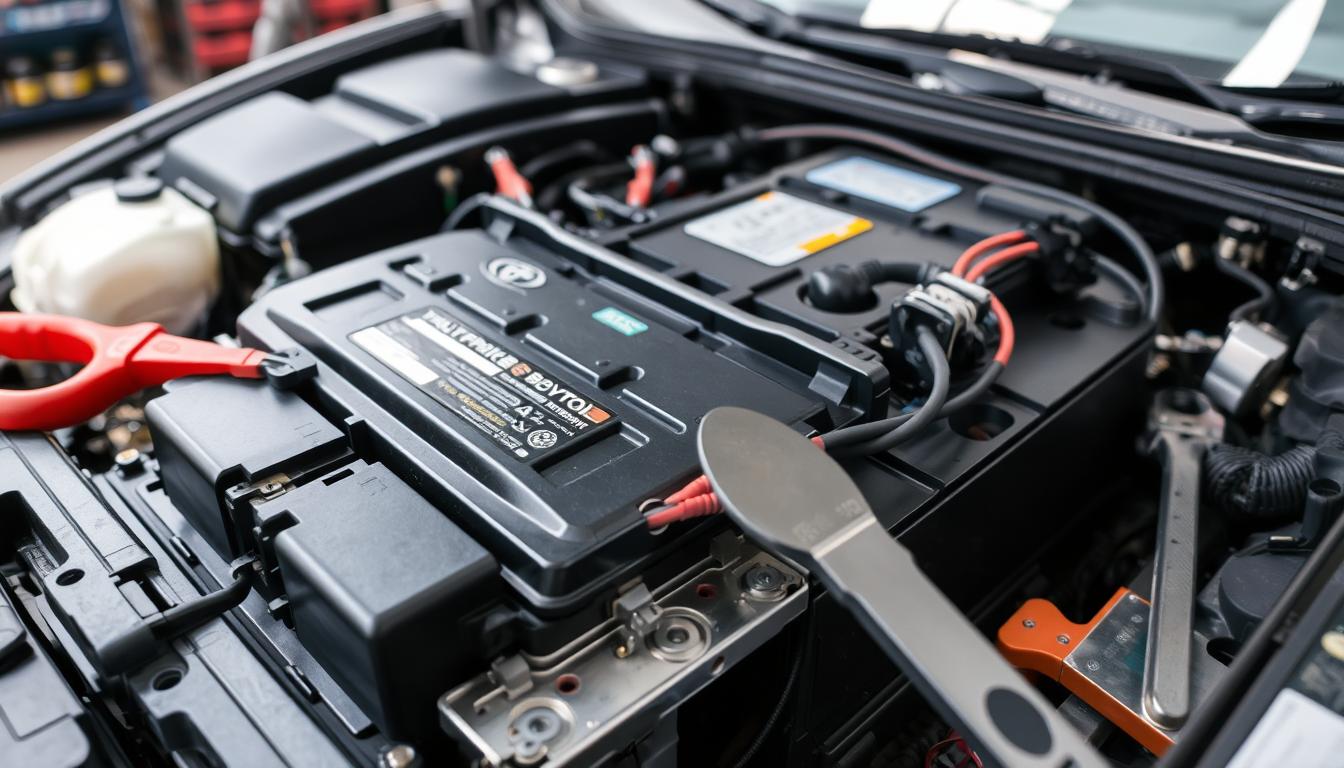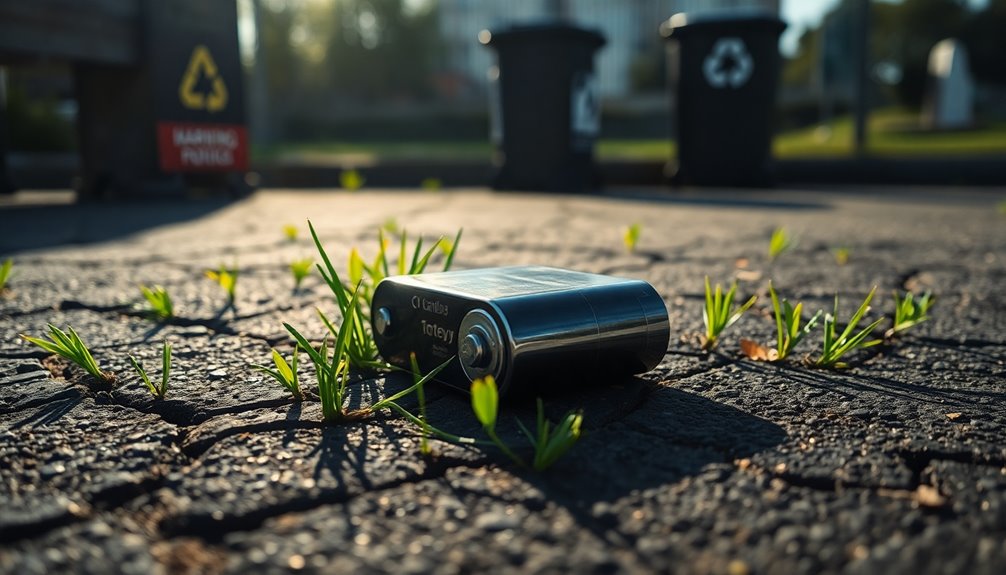Yes, iPhones do use lithium-ion batteries, which are essential for powering your device. These batteries allow for longer usage times without adding extra bulk. With each charge cycle, your iPhone maintains a substantial capacity—80% after 500 cycles for the iPhone 14 and 1000 cycles for the iPhone 15. Proper charging habits can enhance battery longevity, so keeping your battery between 30% and 80% is key. Plus, Apple's battery management system helps monitor health and performance. If you're curious about how these batteries affect your iPhone's overall efficiency and environmental impact, there's more to uncover!
Key Takeaways
- Yes, iPhones use lithium-ion batteries known for their high energy density and longer usage times.
- iPhone 14 maintains 80% battery capacity after 500 charge cycles, while iPhone 15 lasts 1000 cycles.
- Lithium-ion batteries operate through chemical reactions between anode and cathode, generating electric charge.
- Charging habits, like keeping the battery between 30% and 80%, can significantly enhance battery longevity.
- Proper battery management systems in iOS help monitor and maintain battery health for optimal performance.
Understanding Lithium-Ion Batteries
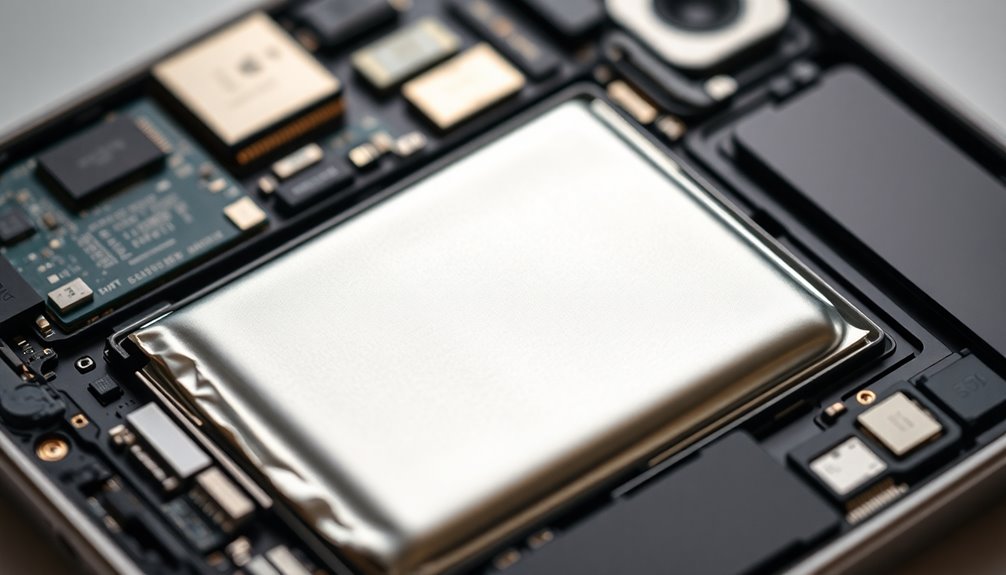
When you consider how your iPhone powers through the day, it's essential to understand lithium-ion batteries and their role in modern technology.
These batteries offer high energy density, allowing for longer usage times without adding bulk. Your iPhone's battery capacity can be impressive, with models designed to maintain 80% capacity after 500 charge cycles for iPhone 14 and 1000 cycles for iPhone 15.
However, chemical aging can diminish this capacity over time. Thankfully, iPhones are equipped with a battery management system that monitors battery health, ensuring peak performance and preventing issues like unexpected shutdowns.
How Iphone Batteries Work
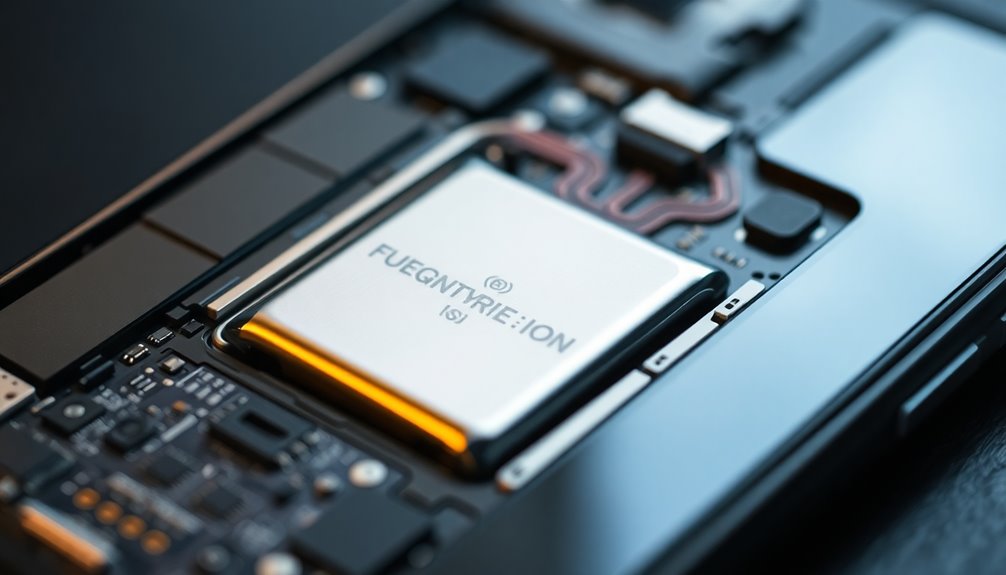
Understanding how iPhone batteries work reveals the intricate dance of lithium ions that powers your device. Your iPhone uses lithium-ion batteries, where chemical reactions occur as lithium ions move between the anode and cathode during charging and discharging.
When you charge your battery, these ions migrate from the anode to the cathode, creating the electric charge that keeps your device running. Over time, the battery's capacity diminishes due to chemical aging and usage patterns, with the iPhone 14 retaining about 80% capacity at 500 charge cycles.
To maintain battery health, iOS includes features that monitor condition and adjust performance, ensuring your phone operates smoothly, even as battery capacity decreases.
Importance of Battery Performance

Battery performance plays a pivotal role in your iPhone experience. Lithium-ion batteries offer faster charging and longer lifespans, but their efficiency can diminish over time. Understanding battery life and health is essential for optimizing your device's performance. Regular charging habits and maintaining a charge between 30% and 80% can enhance battery longevity.
| Aspect | Details |
|---|---|
| Battery Type | Lithium-ion batteries |
| Maximum Capacity | 80% at 500 charge cycles (iPhone 14) |
| 80% at 1000 charge cycles (iPhone 15) | |
| Battery Life | Duration before needing a recharge |
| Battery Health | Assessed by iOS to prevent unexpected shutdowns |
Factors Affecting Battery Lifespan
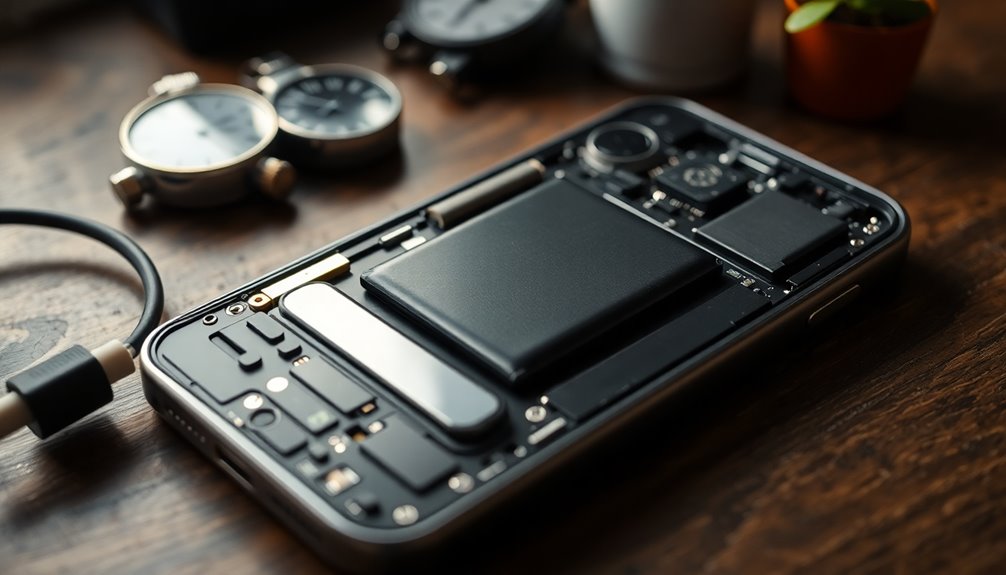
Your charging habits play an essential role in your iPhone's battery lifespan.
Keeping your charge between 30% and 80% can help prevent degradation, while frequent full discharges can shorten its life.
Additionally, environmental conditions like extreme temperatures can further impact performance, so be mindful of where you use your device.
Charging Habits Impact Lifespan
While it might seem convenient to charge your iPhone whenever you can, the way you manage your charging habits greatly influences the lifespan of its lithium-ion battery.
Here are some tips to enhance your battery health:
- Keep your charge between 30% and 80% to extend battery lifespan.
- Minimize complete charge cycles by avoiding full discharges.
- Use fast charging for quick boosts but allow for trickle charging afterward.
- Frequent partial discharges can help mitigate cycle depletion.
- Be aware of environmental factors, as extreme temperatures can harm performance.
Environmental Conditions Influence Performance
Since lithium-ion batteries are sensitive to environmental conditions, temperature extremes can greatly impact your iPhone's performance. High temperatures above 95°F (35°C) can decrease efficiency and increase the risk of explosion.
Conversely, cold conditions lead to diminished charge capacity and potential shutdowns. Both high chemical aging and low state of charge further elevate the likelihood of unexpected shutdowns in lithium-ion batteries.
To protect your device, avoid leaving your iPhone in hot environments, like car dashboards. Instead, aim to keep your battery between 30% and 80% charged, which can help extend its lifespan.
Managing Battery Health

To effectively manage battery health, it's essential to understand how your iPhone's lithium-ion battery operates.
Regularly monitoring your battery health can greatly enhance your device's performance and lifespan. Here are some tips to help you:
- Keep your battery charge between 30% and 80% to optimize battery health.
- Be mindful of charge cycles; iPhone 14 models retain 80% capacity at 500 cycles, while iPhone 15 models reach 1000 cycles.
- Use the iOS management system to assess battery health and determine when you need a battery replacement.
- Avoid frequent low battery incidents to prevent unexpected shutdowns.
- Always opt for genuine Apple batteries and services for replacements to maintain accurate health data.
Charging Methods Explained

When it comes to charging your iPhone, understanding the methods can make a big difference in how you use your device.
Fast charging offers a quick energy boost, while trickle charging focuses on maintaining battery health over time.
Let's explore how these charging cycles work and what benefits they bring to your daily routine.
Fast Charging Benefits
Fast charging offers a convenient way to power up your iPhone quickly, allowing you to reach up to 80% battery capacity in a fraction of the time.
Apple Inc. introduced this technology with the iPhone 8 and iPhone X in 2017, enhancing your charging experience.
With lithium-ion batteries, fast charging works through intelligent charging phases, ensuring efficient power delivery without compromising battery health.
The Optimized Battery Charging feature, available since iOS 13, uses machine learning to identify your charging habits and reduce battery wear. Additionally, lithium-ion batteries are known for their antioxidant properties, which help to maintain optimal performance over time.
- Reach 80% charge in minutes
- Efficient for busy lifestyles
- Reduced downtime for your device
- Maintains battery health over time
- Smart charging management with iOS
Trickle Charging Explained
After enjoying the benefits of fast charging, it's important to understand another method that plays a key role in maintaining your iPhone's battery health: trickle charging.
This technique gradually supplies a lower current to lithium-ion batteries once they reach about 80% capacity. By doing so, trickle charging reduces stress on the battery and prevents overheating, which helps enhance battery longevity.
It seamlessly takes over after fast charging, ensuring a safe shift to a full charge. Additionally, this gradual charging process keeps the battery at a stable temperature, minimizing the risk of chemical aging and voltage drops that could cause unexpected shutdowns.
Implementing trickle charging strategies is essential for enjoying reliable device performance over time.
Charging Cycle Dynamics
Understanding charging cycle dynamics is essential for maximizing your iPhone's battery life. Your iPhone's lithium-ion battery maintains impressive battery capacity, retaining up to 80% after 500 charging cycles for the iPhone 14 and 1000 for the iPhone 15.
Each charge cycle counts cumulatively, so partial charges can help preserve battery health. Fast charging gets your battery to 80% quickly, but the slower trickle charging maintains ideal health, preventing overheating.
iOS smartly manages these charging stages, ensuring your battery doesn't overcharge.
- Charge at any level without harm
- Partial charges contribute positively
- Fast charging saves time
- Enhanced Battery Charging learns your habits
- Maintain battery health over time
Environmental Impact of Batteries
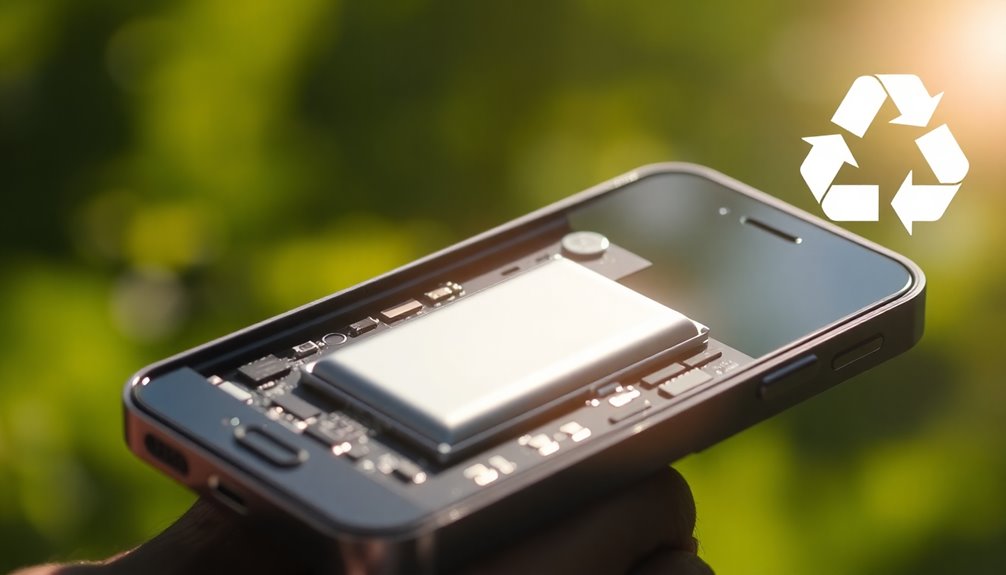
Lithium-ion batteries, commonly used in iPhones and other smartphones, frequently have a significant environmental impact.
The production process requires mining raw materials like lithium, cobalt, and nickel, which can lead to habitat destruction and water pollution. In addition, the carbon footprint associated with battery production is substantial, as mining and refining operations contribute to greenhouse gas emissions.
Improper disposal of these batteries can also result in toxic chemicals leaching into landfills, posing risks to both the environment and human health.
Recycling processes are essential to recover valuable materials, but they still carry environmental risks if not managed properly.
Thankfully, there's a growing emphasis on sustainability initiatives within the tech industry, promoting responsible sourcing and recycling programs to mitigate these impacts. Furthermore, the shift towards circular economy practices emphasizes reuse and recycling to minimize environmental harm.
Future of Battery Technology
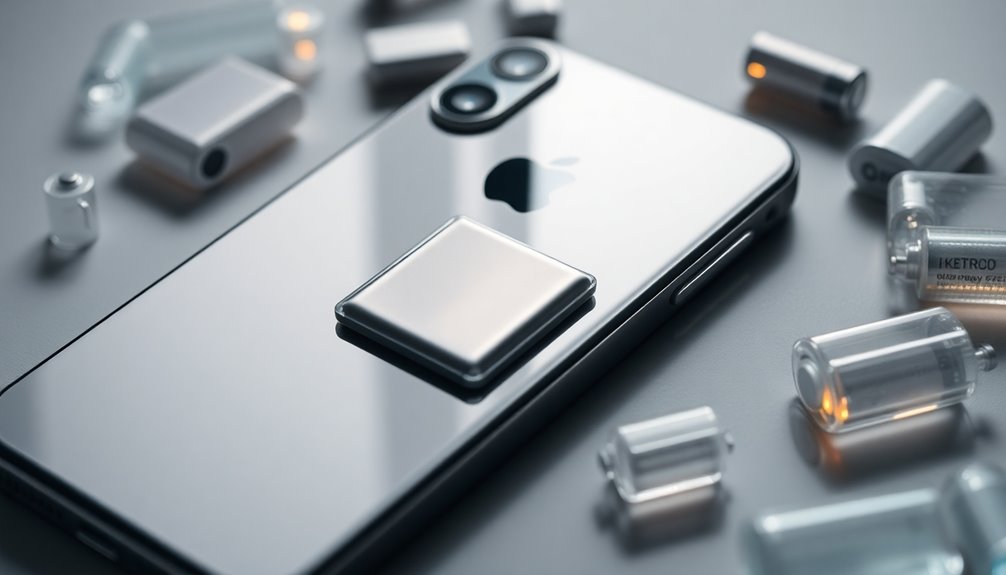
Battery technology is rapidly evolving, driven by the need for more efficient and sustainable energy solutions.
You'll find that research is focusing on lithium-sulfur and solid-state batteries, which promise higher energy densities and improved safety over traditional lithium-ion batteries.
Solid-state batteries utilize solid electrolytes, potentially leading to lighter batteries ideal for electric vehicles.
Meanwhile, lithium-sulfur batteries could offer up to five times the energy density of current options, enhancing battery life for your devices.
Additionally, emerging technologies like sodium-ion batteries are gaining attention due to their cost-effectiveness and sustainability.
- Higher energy densities
- Improved safety features
- Longer battery life
- Cost-effective solutions
- Revolutionized energy storage
The future of batteries looks bright and promising!
Frequently Asked Questions
Are Iphones Powered by Lithium Batteries?
Yes, iPhones are powered by lithium-ion batteries, which offer fast charging and a long lifespan.
You'll appreciate their high energy density, making your device lightweight and sleek.
With models like the iPhone 14 and 15, you'll find they retain much of their capacity even after many charge cycles.
The built-in battery management system guarantees peak performance, helping you avoid unexpected shutdowns and maximizing your device's longevity.
Enjoy the benefits of this advanced technology!
Are Cell Phones Powered by Lithium Batteries?
Think of your smartphone as a tiny powerhouse, and it's no surprise that cell phones are indeed powered by lithium-ion batteries.
These marvels of technology offer high energy density, lightweight design, and impressive lifespan, keeping your device running smoothly.
They recharge quickly, holding about 80% of their original capacity even after numerous charges.
How Long Does Iphone Lithium Battery Last?
Your iPhone's lithium battery typically lasts several years, depending on usage.
After about 500 charge cycles, it retains around 80% capacity for models like the iPhone 14, while the iPhone 15 can last up to 1000 cycles.
Regularly checking your battery health in settings helps you monitor its performance.
To extend its lifespan, try keeping the charge between 30% and 80%, reducing wear from extreme charging habits.
Is My Phone Battery a Lithium Battery?
Is your phone battery a lithium battery? If you're using a modern smartphone, it most likely is!
Lithium-ion batteries power most devices today, offering quick charging and high energy density.
You can check your phone's battery health in the settings to see how well it's holding up over time.
Conclusion
To sum up, yes, iPhones do use lithium-ion batteries, which are essential for your device's performance and longevity. Did you know that over 1.5 billion lithium-ion batteries are produced annually? This staggering number highlights the growing reliance on this technology. By understanding how your iPhone's battery works and taking steps to manage its health, you can maximize its lifespan and enjoy a more reliable device. Embrace these insights, and keep your iPhone powered and ready for anything!

